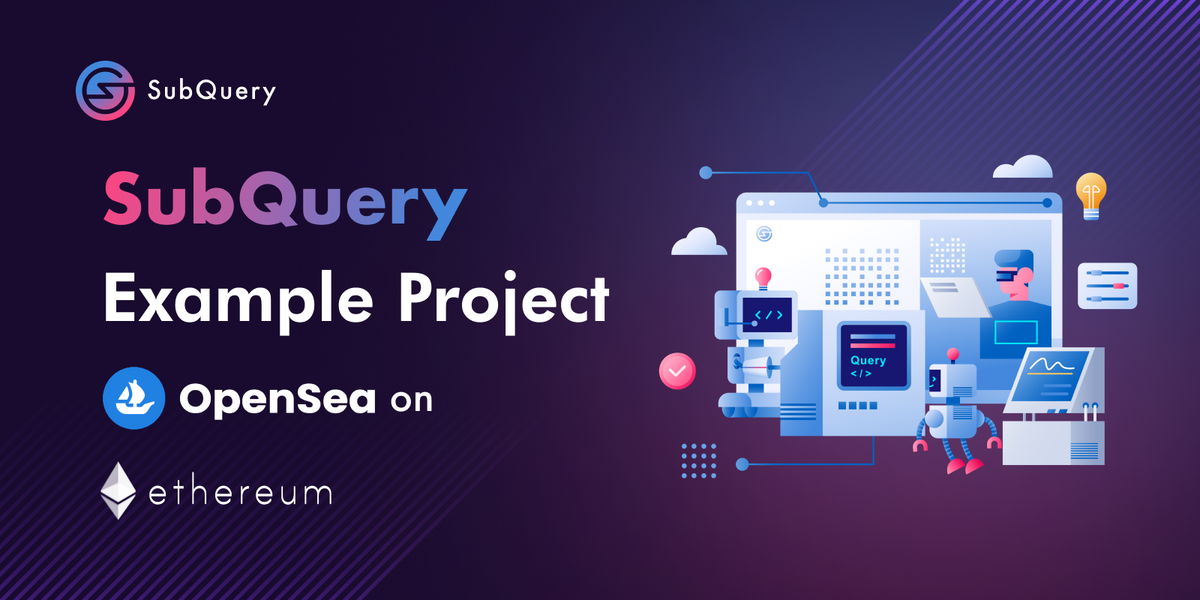OpenSea has emerged as a global epicentre for NFTs, establishing itself as a vibrant ecosystem for creators, collectors, and traders alike. Whether you're a developer seeking to construct applications that harness the power of NFT data or an enthusiast eager to immerse yourself in the realm of digital collectibles, this guide is designed to seamlessly lead you through the steps of configuring your personal OpenSea SubQuery indexer.
The aim of this article is to provide a comprehensive, step-by-step manual for establishing a SubQuery indexer designed for the Opensea Seaport protocol. We will thoroughly address the essential configurations and explore the nuances of the underlying logic. This serves as a valuable illustration of the indexing process for a sophisticated NFT marketplace such as Opensea.
This project stands as an excellent illustration of Ethereum's Log Handlers and the process of querying the contract state. It involves extracting mapping data, including smart contract addresses, from the logs. Subsequently, these extracted contract states are queried by harnessing the user-friendly methods that are automatically generated from the uploaded ABI files.
Example
The Opensea Seaport example project thoroughly captures a wide range of information, including trades, collections, and statistical data such as daily collection and marketplace statistics.
Key resources:
Use-Cases
Next, we will explore various intriguing historical analysis use cases that cater to diverse requirements. Let's examine a few examples:
The query mentioned above retrieves the most recent trade. Extracting trades is a vital use case for any NFT marketplace dapps, and without the SubQuery indexer, data would have to be decoded manually from the blockchain.
The query provided above compiles a list of all the collections participating in Seaport's NFT trading activities. Collection addresses are extracted from the fulfilled order log originating from the primary Seaport smart contract. Once the collection addresses are identified, their states are queried to gather information about each collection, including details like name, total supply, and symbol.
The query mentioned above retrieves data from one of the various statistical entities we generate, specifically focusing on daily collection statistics. This is essential for the developers seeking easy access to the protocol's macroeconomic data, as such data is evidently not available at the smart contract level.
To sum up, SubQuery provides a user-friendly SDK for building a dApp that efficiently utilises data obtained from the Opensea Seaport protocol. This serves as a crucial use case, given the increasing tokenization of real-world assets using the popular NFT standards compatible with Seaport. This positioning makes the protocol a preferred marketplace for both trading operations involving NFT-tokenized RWAs and standard NFTs.
About Opensea
OpenSea is one of the most well-known and widely used online marketplaces for NFTs. OpenSea allows users to buy, sell, trade, and showcase NFTs, which can include digital art, collectibles, virtual real estate, in-game items, and more.Trades on Opensea are executed according to Seaport protocol. It's essential to recognize that this protocol extends its utility not solely to OpenSea but to all NFT builders, creators, and collectors..
About SubQuery
SubQuery is a leading blockchain data indexer that provides developers with fast, flexible, universal, and decentralised APIs for web3 projects. We empower developers from over 100+ ecosystems including Ethereum, Polygon, Polkadot, Cosmos, Algorand, NEAR, and Avalanche with rich indexed data to allow them to build intuitive and immersive decentralised applications. This blockchain developer toolkit enables developers to focus on their core use case and front-end without wasting time building a custom backend for data processing activities. In the near future, the SubQuery Network will replicate this scalable and reliable solution in a completely decentralised manner.

